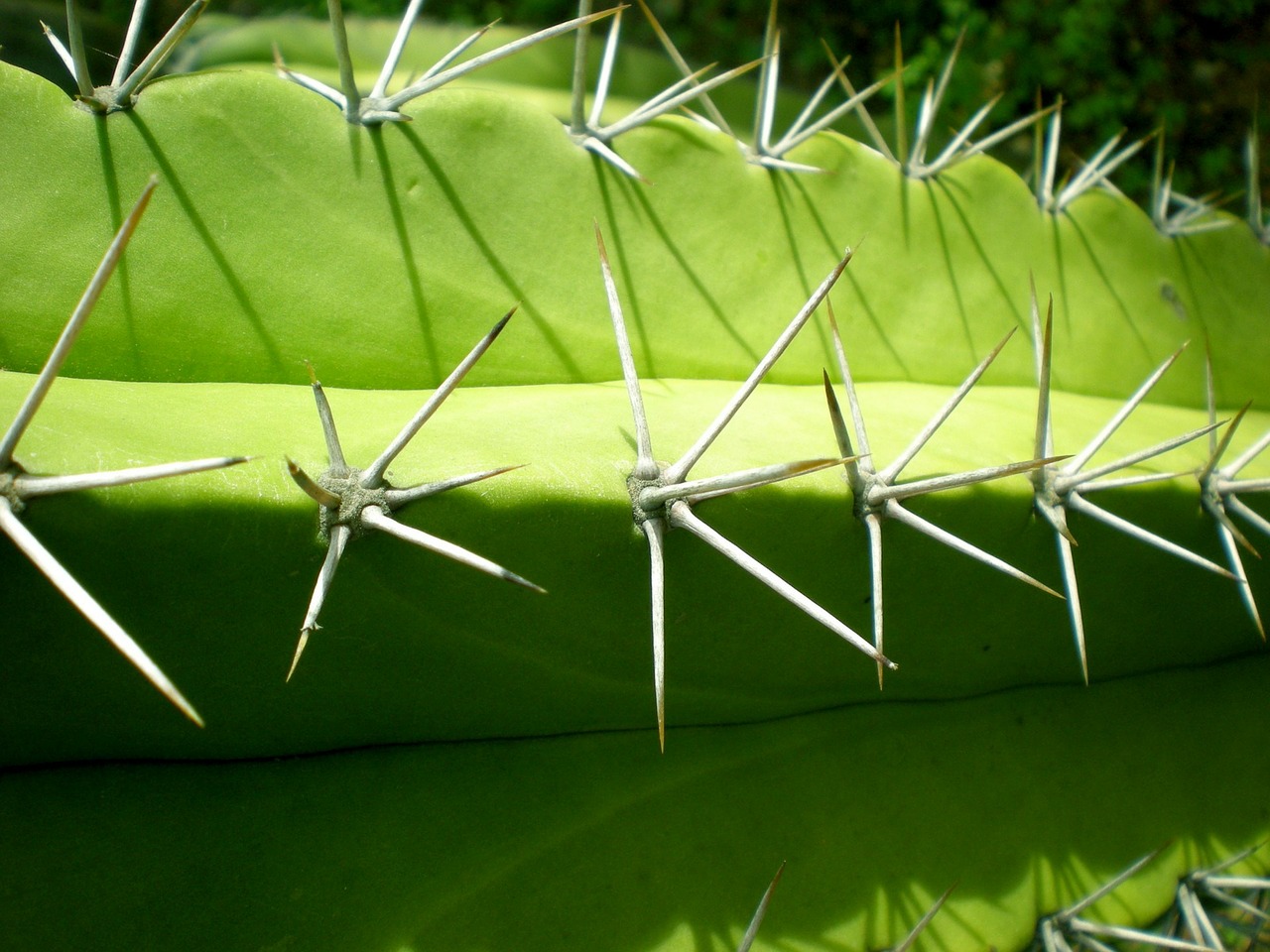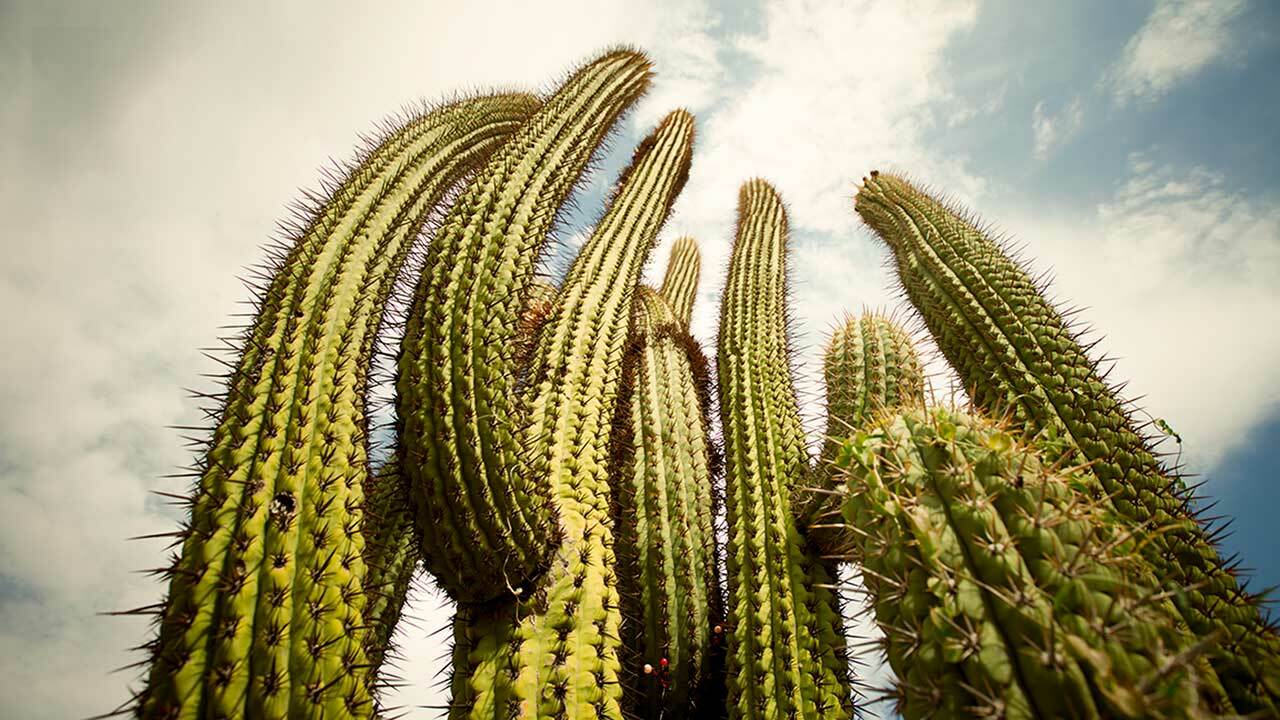Most Common Cactus Questions: 10. Are All Cacti Sharp And Spiky?
Imagine walking through a desert and stumbling upon a breathtaking sight: a vibrant and blooming cactus. Contrary to popular belief, not all cacti are sharp and spiky. In fact, some cacti have smooth and cylindrical stems, while others boast delicate and colorful flowers. In this article, we will explore the diverse world of cacti, unveiling their hidden beauty and dispelling the myth that they are all thorny beasts. So, let's embark on this journey together and discover the surprising variety and wonder that lies within the fascinating world of cacti.
1. Introduction to Cacti
Definition of cacti
Cacti, scientifically known as Cactaceae, are a family of succulent plants that are native to the Americas. These plants are known for their unique and distinct features, including their succulent stems, which store water, and their spines, which are often prickly and sharp.
Popular characteristics of cacti
Cacti are renowned for their ability to thrive in arid and desert environments. Their succulent nature allows them to retain water for long periods, making them well-adapted to survive in harsh conditions where water is scarce. Additionally, cacti typically have shallow root systems that allow them to quickly absorb any moisture from the environment.
Perception of cacti as spiky plants
One of the most noticeable features of cacti is their spines, which cover their stems and give them their characteristic spiky appearance. While not all cacti have large, sharp spines, the presence of spines is often associated with this family of plants. These spines serve as a defense mechanism against herbivores, helping to deter animals from consuming their water-filled stems.
2. Diversity of Cacti
Number of cacti species
The family of cacti is incredibly diverse, with over 1,500 known species. These species vary greatly in size, shape, and growth habits, making cacti a fascinating group of plants to study and enjoy.
Wide range of shapes and sizes
Cacti exhibit an astonishing array of shapes and sizes. Some cacti, like the saguaro cactus, can grow to be several feet tall and have a tree-like appearance, while others, such as the tiny pincushion cactus, are no larger than a few centimeters. Additionally, cacti can take on various forms, from cylindrical or globular to columnar or even branching.
Variation in growth habits
Cacti also differ in their growth habits. While some cacti grow as solitary individuals, others form large clusters or dense clumps. Certain species of cacti have a creeping or trailing habit, while others may grow in an upright or prostrate manner. This wide range of growth habits adds to the allure and diversity of cacti.

This image is property of www.plantsnap.com.
3. Evolutionary Adaptations
Role of spines in cactus survival
Spines play a crucial role in the survival of cacti, particularly in their native arid environments. These sharp structures help to deter herbivores from feeding on the water-storing tissues of the cacti. Additionally, the spines create a microclimate around the plant, reducing airflow and thus minimizing the loss of valuable moisture through transpiration.
Functions of cactus spines
In addition to their defensive role, cactus spines serve several other functions. They function as shade providers, offering protection to the sensitive tissues of the cactus from intense sunlight. Spines can also help regulate the temperature around the cactus by acting as insulators, reducing heat loss during cool nights and preventing overheating during hot days.
Other adaptations for arid environments
Apart from spines, cacti have evolved various other adaptations to survive in arid climates. Some cacti have the ability to open their stomata at night when conditions are cooler and humidity is higher, allowing them to reduce water loss through transpiration. Others have a waxy or hairy surface on their stems, which helps to prevent moisture loss and provides additional insulation.
4. Cacti Without Spines
Examples of spineless cacti
Contrary to popular perception, not all cacti have spines. Some species, known as spineless or areolar cacti, lack obvious spines but still belong to the Cactaceae family. Examples of spineless cacti include the Christmas cactus (Schlumbergera spp.), the Easter cactus (Hatiora spp.), and the Moon cactus (Gymnocalycium spp.).
Characteristics of spineless cacti
Spineless cacti often have flattened stems and are typically found in tropical regions as opposed to the arid habitats commonly associated with cacti. These plants are instead covered with tiny, hair-like structures known as glochids, which can irritate the skin if touched.
Unique adaptations of spineless cacti
Spineless cacti have evolved unique adaptations to survive in their particular environments. For example, the Christmas cactus has flattened stems that allow it to capture and retain moisture from the humidity of its native rainforest habitat. These fascinating plants demonstrate the diverse strategies cacti employ to thrive in various ecosystems.

This image is property of www.plantsnap.com.
5. Cacti with Soft Spines
Overview of cacti with soft spines
While many cacti have sharp and prickly spines, there are also species that possess soft spines. These spines are often hair-like or feathery in appearance and can appear less intimidating compared to the traditional sharp spines.
Types and features of soft spines
Cacti with soft spines belong to various genera and have distinct characteristics. For example, the Old Lady cactus (Mammillaria hahniana) has white, hair-like spines that give it a soft and fluffy appearance. The Bunny ears cactus (Opuntia microdasys) has glochids that are soft and fuzzy, resembling tiny hairs.
Ecological advantages of soft spines
Soft spines provide similar advantages to their sharp counterparts, such as shading and protecting the cactus from intense sunlight. They also help reduce water loss through transpiration by creating a microclimate around the plant. The softer texture of these spines may serve as an additional deterrent to grazing animals, as they are less likely to cause injury.
6. Cacti with Glochids
Explanation of glochids
Glochids are tiny, barbed structures that serve as a defense mechanism for certain cacti species. Unlike conventional spines, glochids are not sharp but instead latch onto anything they come into contact with. They are commonly found in the Opuntia genus of cacti, including the prickly pear cactus.
Cacti species with glochids
Various cacti species possess glochids, which can be found on the surface of their pads or stems. The Indian fig cactus (Opuntia ficus-indica) and the Cholla cactus (Cylindropuntia spp.) are examples of cacti known for their abundance of glochids.
Glochid-related discomfort and removal
When glochids come into contact with skin, they can cause irritation and discomfort. The barbed nature of glochids makes them difficult to remove, often requiring specialized tools or techniques. Tweezers, adhesive tape, or even applying a layer of white glue to the affected area and letting it dry before peeling it off can help remove glochids from the skin.

This image is property of 8billiontrees.com.
7. Cacti with Harmful Spines
Dangerous cacti species
While most cacti do not pose significant harm to humans, some species have spines that can be dangerous if mishandled. The Jumping cholla cactus (Cylindropuntia fulgida) and the Fishhook barrel cactus (Ferocactus wislizeni) are examples of cacti that have spines with barbed hooks that can easily attach to skin or clothing.
Potential harm caused by certain spines
Spines from dangerous cacti can cause physical injury, including puncture wounds and deep lacerations. Additionally, these spines can be difficult to remove due to their barbed or hooked nature, potentially leading to further irritation and infection if not properly treated.
Precautions when handling harmful cacti
When dealing with cacti that have harmful spines, it is important to exercise caution. Wearing thick gloves, using long-handled tools, and keeping a safe distance are essential when working around these cacti. Additionally, if injured by spines, it is advisable to seek medical attention if the wound is deep or signs of infection develop.
8. Non-spiny Defense Mechanisms
Cacti with chemical defenses
Not all cacti rely solely on spines for protection; some have developed chemical defenses as well. For instance, the Peyote cactus (Lophophora williamsii) produces psychoactive alkaloids that deter animals from consuming it.
Camouflage as a form of protection
Certain cacti have evolved to blend in with their surroundings, providing them with a form of protection against predators. The Living rock cactus (Ariocarpus fissuratus) resembles a small rock, making it difficult to spot in its desert habitat.
Mechanical barriers other than spines
In addition to spines, cacti have developed other mechanical barriers to protect themselves. The Jointed club cactus (Echinocactus texensis) has a series of tubercles on its stems, which act as a physical barrier against herbivores trying to reach its water-storing tissues.

This image is property of dsk4t6ov5vq8n.cloudfront.net.
9. Edible and Cultivated Cacti
Common culinary cacti
Cacti have long been used as a source of food and nutrition in various cultures. Prickly pear cacti, specifically Opuntia ficus-indica and Opuntia humifusa, are commonly consumed, with their pads and fruits being utilized in numerous culinary dishes.
Different uses of cacti
Apart from their edible qualities, cacti have other practical uses as well. The Saguaro cactus (Carnegiea gigantea) has played an important role in traditional indigenous cultures, with various parts of the plant being used for construction, crafts, and even medicine.
Methods of preparing cacti for consumption
To prepare cacti for consumption, spines and glochids must be safely removed. This can be achieved by carefully peeling or scraping off the spines using a knife or vegetable peeler. The remaining flesh can then be sliced, diced, or cooked according to the desired recipe.
10. Cacti as Houseplants
Popular indoor cacti varieties
Cacti make excellent houseplants due to their ability to withstand dry indoor conditions and their low-maintenance nature. Some popular indoor cacti varieties include the Golden Barrel cactus (Echinocactus grusonii), the Moon cactus (Gymnocalycium mihanovichii), and the Bunny ears cactus (Opuntia microdasys).
Suitable conditions for growing cacti indoors
When growing cacti indoors, it is important to provide them with the right conditions for their optimal growth. Cacti typically thrive in bright, direct sunlight, so placing them near a sunny window is ideal. They also prefer well-draining soil and infrequent watering to mimic their natural desert habitat.
Tips for caring for cacti as houseplants
Caring for cacti as houseplants is relatively easy, but there are a few key things to keep in mind. Firstly, overwatering can be detrimental to cacti, so it is important to let the soil dry out between waterings. Fertilizing sparingly and avoiding cold drafts are also essential for maintaining healthy indoor cacti.
In conclusion, cacti are a diverse and fascinating group of plants known for their ability to thrive in arid environments. Their spines, although commonly associated with cacti, are not present in all species, highlighting the vast range of adaptations these plants have developed. From soft spines to chemical defenses, cacti have evolved a variety of mechanisms to survive in their unique habitats. Whether enjoyed as outdoor specimens, cultivated as edible plants, or grown as houseplants, cacti continue to captivate and delight with their unique beauty and resilience.
